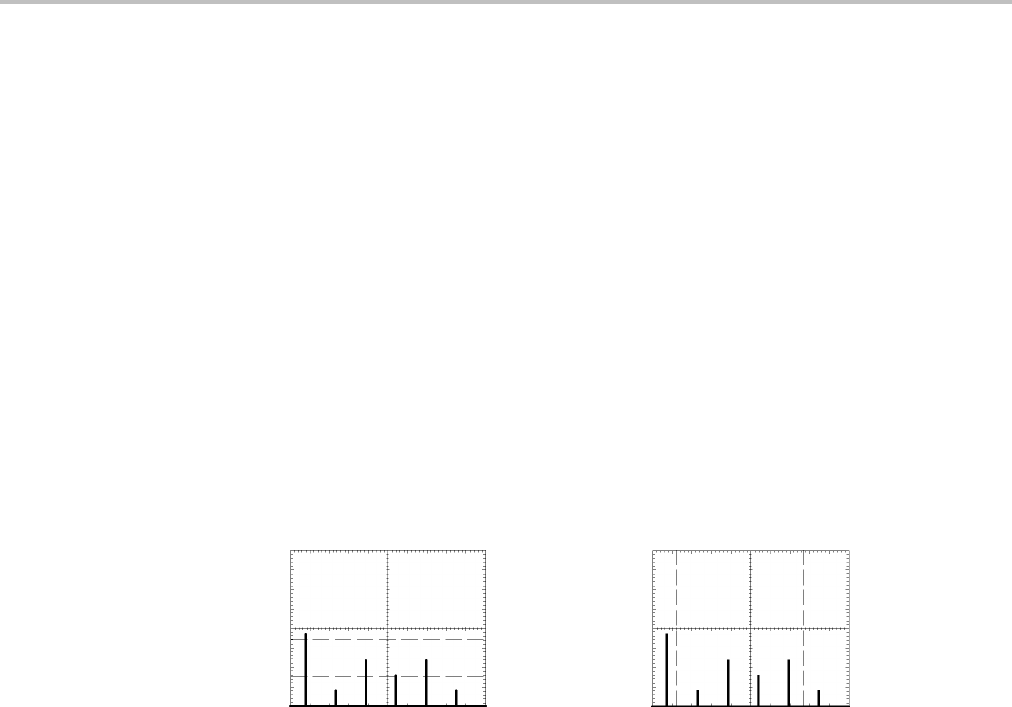User manual
Table Of Contents
- toc
- General safety summary
- Compliance Information
- Preface
- Getting Started
- Operating Basics
- Understanding Oscilloscope Functions
- Application Examples
- Taking Simple Measurements
- Using Autorange to Examine a Series of Test Points
- Taking Cursor Measurements
- Analyzing Signal Detail
- Capturing a Single-Shot Signal
- Measuring Propagation Delay
- Triggering on a Specific Pulse Width
- Triggering on a Video Signal
- Analyzing a Differential Communication Signal
- Viewing Impedance Changes in a Network
- Data Logging
- Limit Testing
- Math FFT
- USB Flash Drive and Device Ports
- USB Flash Drive Port
- File Management Conventions
- Saving and Recalling Files With a USB Flash Drive
- Using the Save Function of the Print Front Panel Button
- USB Device Port
- Installing the PC Communications Software on a PC
- Connecting to a PC
- Connecting to a GPIB System
- Command Entry
- Connecting to a Printer
- Printing a Screen Image
- Reference
- Appendix A: Specifications
- Appendix B: TPP0101 and TPP0201 Series 10X Passive Probes Inform
- Appendix C: Accessories
- Appendix D: Cleaning
- Appendix E: Default Setup
- Appendix F: Font Licenses

Math FFT
Measuring an F
FT Spectrum Using C ursors
You can take two measurements on FFT spectrums: magnitude (in dB), and
frequency (in H z). Magnitude is referenced to 0 dB, where 0 dB equals 1 V
RMS
.
You can use the cursors to take measurements at any zoom factor. To do so,
follow these s teps:
1. Push the Cursor button to see the Cursor Menu.
2. Push Source ► MATH.
3. Push the Type option button to select Magnitude or Frequency.
4. Use the multipurpose knob to move cursors 1 and 2.
Use hori
zontal cursors to measure magnitude and vertical cursors to measure
frequency. The options display the delta between the two cursors, the value at
cursor 1 position, and the value at cursor 2 position. Delta is the absolute value of
cursor 1 minus cursor 2.
Magnitude cursors Frequency cursors
You can also take a frequency measurement without using the cursors. To do so,
turn
the Horizontal Position knob to position a frequency component on the center
graticule line and read the frequency at the top right of the display.
62 TBS1000 Series Oscilloscopes User Manual










